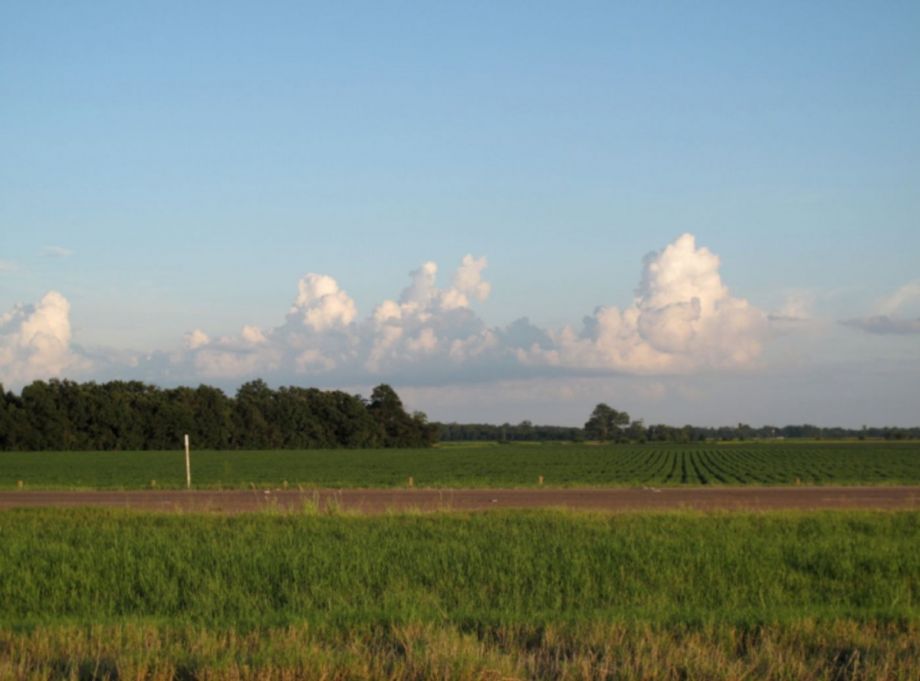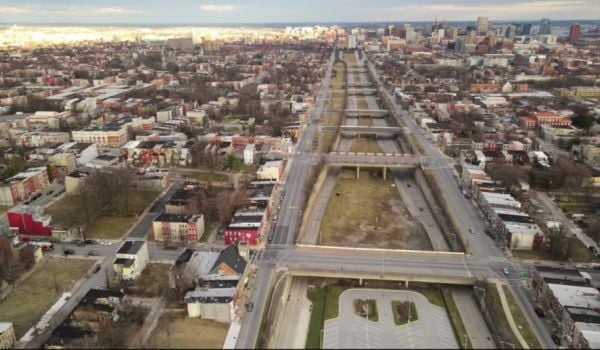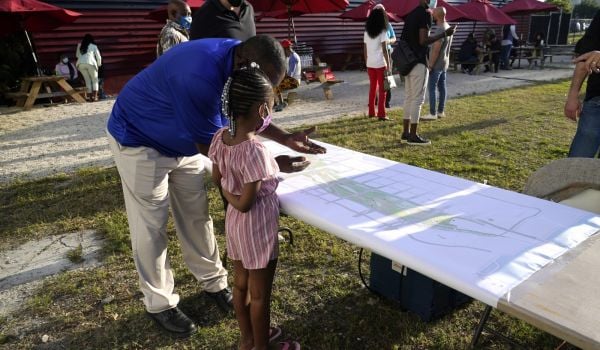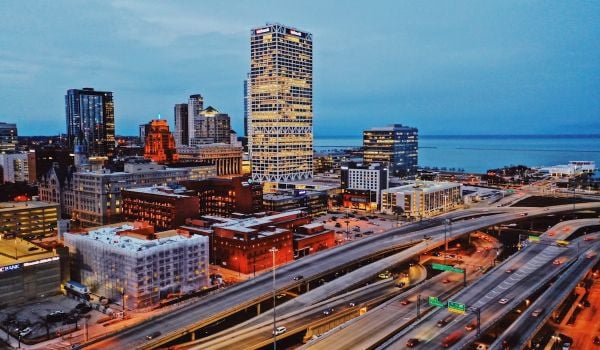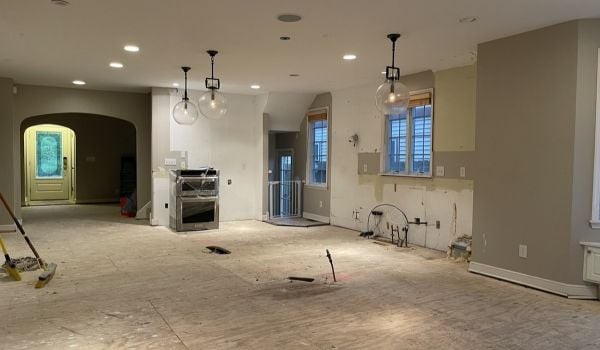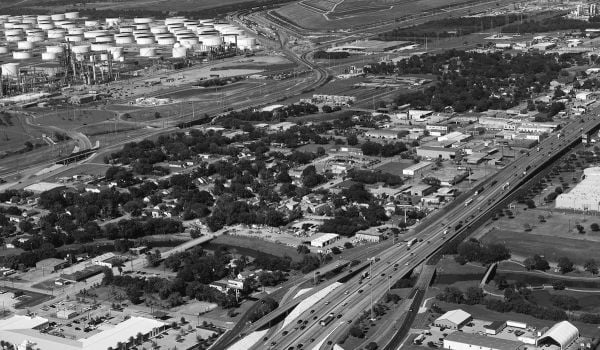The Grassroutes Column is proceeding on a journey throughout the southern United States for a series about urban regeneration and transportation called “New Directions for the Old South.” So far, I’ve discussed Raleigh (Part 1 | Part 2), Knoxville, and Nashville.
Leaving Memphis, the route south is a depressing amalgam of half-empty strip malls, broken-down car dealerships, and Elvis Presley-themed tourist traps. It is the physical manifestation of years of disinvestment in a semi-urban community whose homes and shops have clearly seen better times.
Once Memphis’ urban sprawl is accounted for, however, what opens up is a panorama of lush crops blushing in the mid-summer sun. On the road down to Clarksdale, rural Mississippi shines in its brightest light; in spite of the crushing poverty that makes the Delta region one of the poorest in the nation, the landscape is beautiful along U.S. Highway 61.
This is where the State of Mississippi hopes one day to lay down Interstate 69, a road whose planners hope will eventually stretch from the Mexican border in Texas to the Canadian border in Michigan. Its construction would be of a magnitude not seen for decades, writes Matt Dellinger in his book coming to bookstands next week Interstate 69: The Unfinished History of the Last Great American Highway (New York: Scribner, 2010).
Dellinger places the highway’s development alongside the personal narratives of the actors working faithfully to build it — or, on the other hand, to stop it before it is completed. The highway, it becomes quickly apparent, is far more than just a way to get from one place to the next: It embodies a conflict over growth, progress, even destiny.
If completed, I-69 would connect Detroit with Indianapolis, Memphis, Shreveport, and Houston in a straight-shot diagonal across the nation. The section between Indiana’s capital and the Canadian border was completed in the 1950s, but most of the rest of the route isn’t even funded; only two small sections, one in Indiana and the other in Mississippi, have been completed. It would be the last traditional Interstate highway to be built. But its fate has yet to be sealed: Its arguably duplicative route between areas that, with the exception of Texas, aren’t growing in population, has attracted serious criticism in some parts.
For Mississippi’s Delta, which extends along the river in the northwest parts of the state, the road would bring unprecedented renewal, claim its boosters. Driving in the area last month, it is clear that something must be done if the cities want to play a role in today’s economy outside of the gambling allowed in specially authorized casinos near the river. Despite the fertility of the land, most of the towns in the region feel practically asleep. For Clarksdale, a Blues Museum and the opening of a number of blues clubs have apparently reawakened downtown, but it remains overwhelmed with empty storefronts. In Greenville, some sixty miles south, Main Street is practically deserted, its soul sucked out by the infestation of big-box stores along the highway (though not interstate) that has replaced it as the main municipal drag.
Highway proponents from Indianapolis to Houston suggest that the new road would bring prosperity to places that have been left out and encourage growth in places where people are already streaming in. Dellinger cites a number of cities that hope the coming of I-69 will mean the arrival of new automobile plants or other greatly desired “good” jobs. The highway, it is argued, would bring back to life the rural backwater and stem the outmigration of the young. Yet one cannot help but wonder just how many car factories are up for grabs. What makes I-69 so much different from any of the other Interstates?
Even if some big investor does pump in millions for a project, what better will result than just another Wal-Mart? Should a city sacrifice its uniqueness in favor of the common?
Moreover, so many of the arguments made by highway supporters seem hopelessly naive. As Dellinger puts it, the first section of I-69 that opened in Mississippi was like “Fifteen miles of 1956. There were no billboards yet, no fast-food places, no litter, no traffic.” The dream and excitement of the freeway doesn’t seem nearly as appealing once you know its downsides.
Indeed, highway opponents are right to suggest that much of the change I-69 will bring will eliminate the unique nature of many of the places it will touch. Though most of those protesting its construction are based in Indiana, the questions raised by their protests are worth considering in the case of other parts of the country as well. In spite of the almost desolate look of the Mississippi Delta, I have never been to a place that looks or acts like it. Would I-69 eliminate those traits, and if so, would the resulting economic growth be worth it?
At the same time, many of the highway opponents Dellinger portrays seem, truth be told, more focused on their potential individual losses than those of their communities as a whole. As with any eminent domain case, it’s worth asking whether the good of the nation as a whole is more important than that of a few landowners. The answer is not obvious. I loved my drive from Memphis to Clarksdale because I was able to revel in the area’s emptiness, in its devotion to pursuing a lifestyle I would never choose myself. The people of the Delta want the same conveniences I arguably get so easily because of my own local Interstate.
Dellinger’s characters float between these questions — the author rightly declines to judge the motivations of the people on both sides of the fight over Interstate 69. It is difficult to read the book without falling in love both with the wide-eyed economic development strategies of those who would advance the road and the anachronistic love of the land expressed by others who would stop it. Yet only one side can win this fight.

Yonah Freemark is a senior research associate in the Metropolitan Housing and Communities Policy Center at the Urban Institute, where he is the research director of the Land Use Lab at Urban. His research focuses on the intersection of land use, affordable housing, transportation, and governance.

